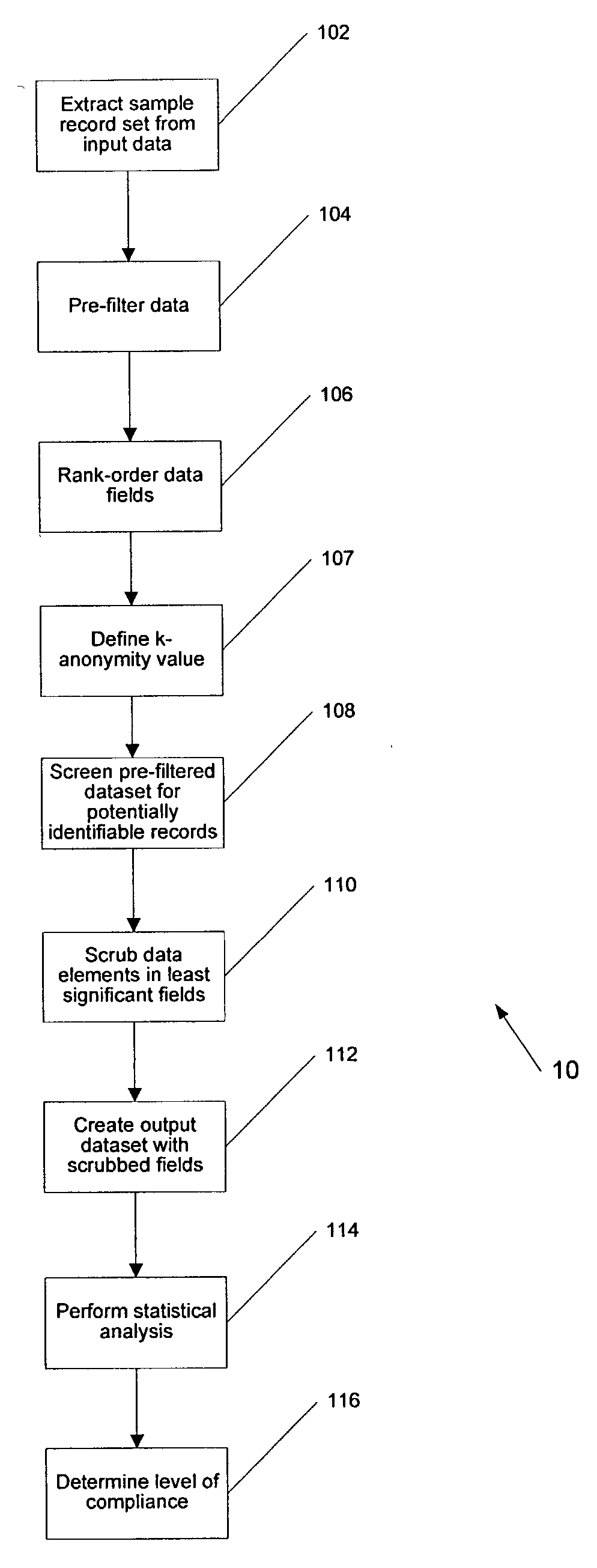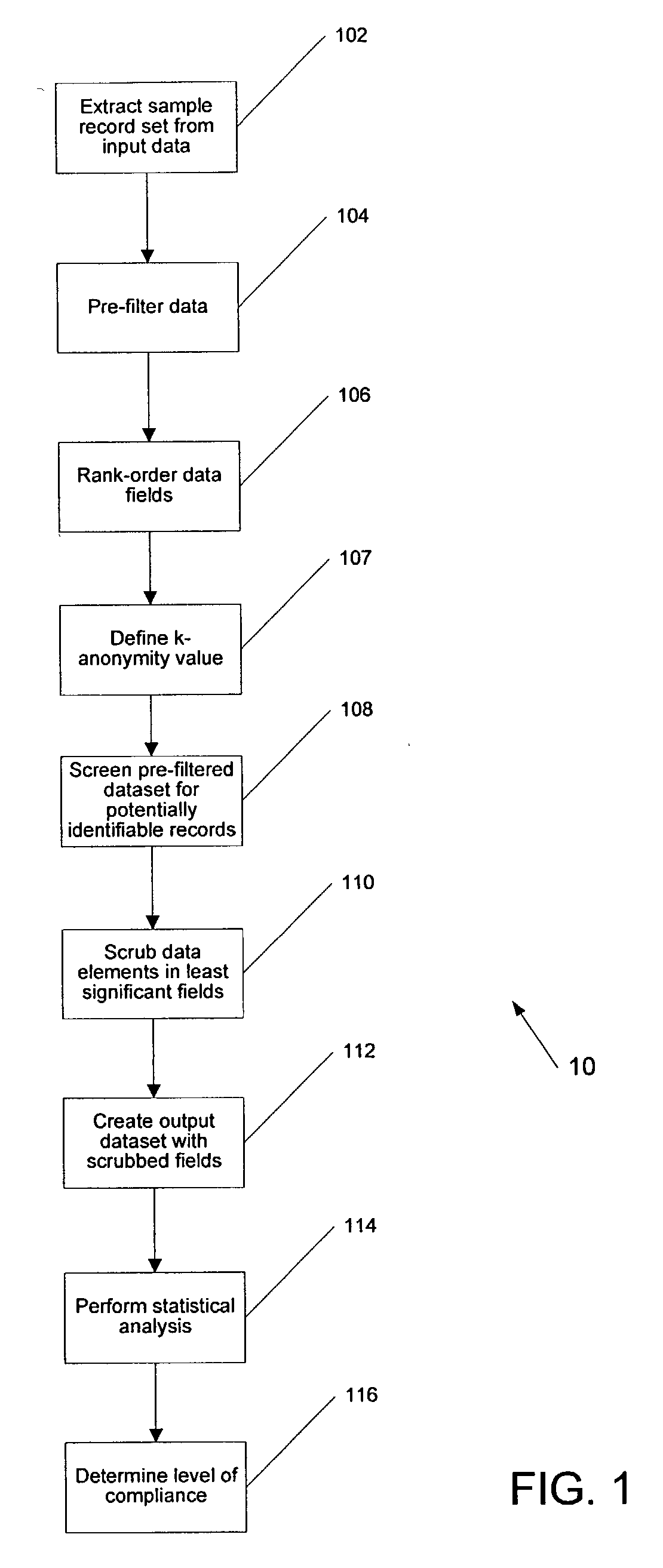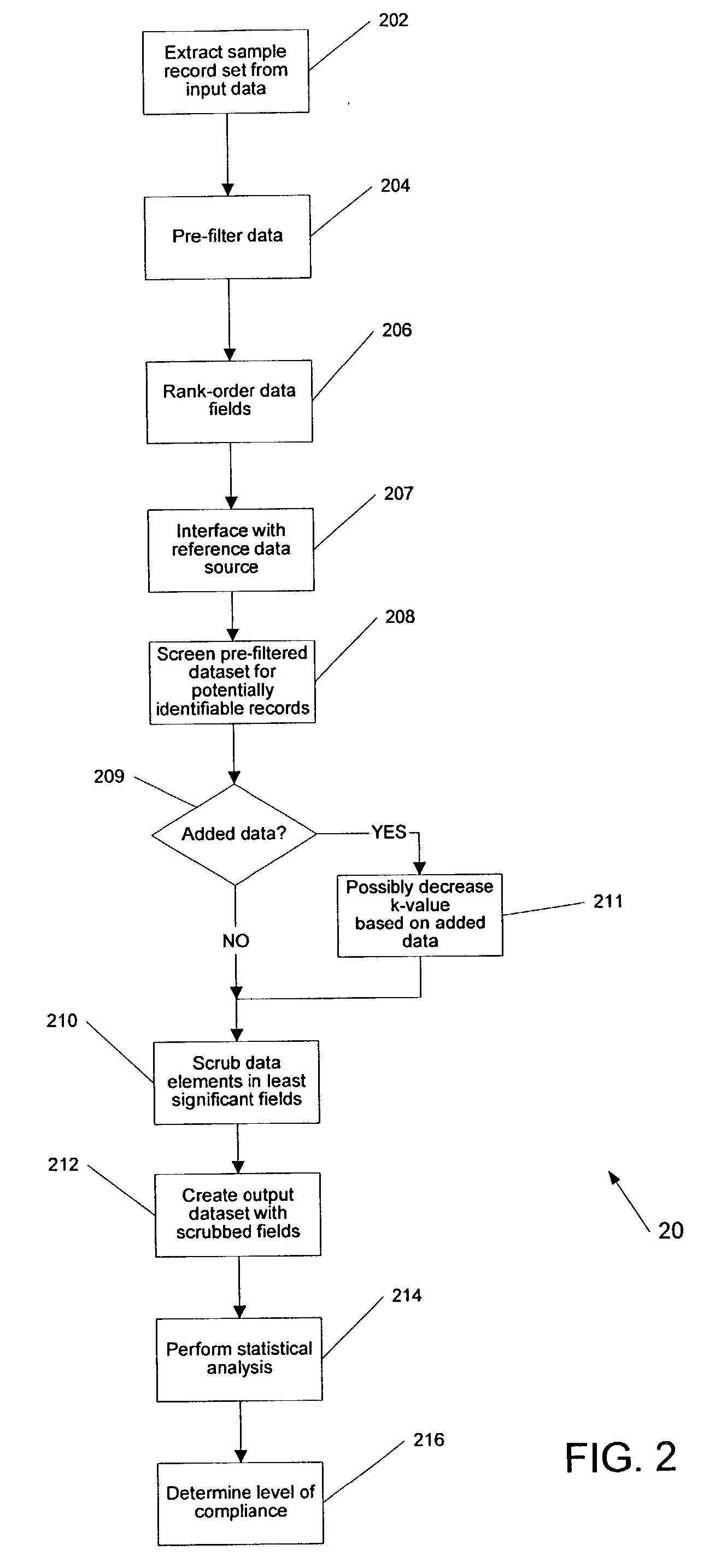Data source privacy screening systems and methods
a data source and privacy screening technology, applied in the field of data processing, can solve the problems of reducing the circumstances under which information about individuals can be collected and disseminated, and removing the most useful data,
- Summary
- Abstract
- Description
- Claims
- Application Information
AI Technical Summary
Problems solved by technology
Method used
Image
Examples
Embodiment Construction
[0021] The systems and methods described herein include, among other things, systems and methods that employ a k-anonymity analysis of abstract to produce a new data set that protects patient privacy, while providing as much information as possible from the original data set. The premise of k-anonymity is that given a number k, every unique record, such as a patient in a medical setting, in a dataset will have at least k identical records. Sweeney, L. "Protecting privacy when disclosing information: k-anonymity and its enforcement through generalization and suppression" (with Pierangela Samarati), Proceedings of the IEEE Symposium on Research in Security and Privacy, May 1998, Oakland, Calif.; Sweeney, L. Datafly: a system for providing anonymity in medical data. Database Security XI: Status and Prospects, T. Y. Lin and S. Qian, eds. IEEE, IFIP. New York: Chapman & Hall, 1998; Sweeney, L. Comnputational Disclosure Control: A Primer on Data Privacy Protection, (Ph.D. thesis, Massachu...
PUM
 Login to View More
Login to View More Abstract
Description
Claims
Application Information
 Login to View More
Login to View More - R&D
- Intellectual Property
- Life Sciences
- Materials
- Tech Scout
- Unparalleled Data Quality
- Higher Quality Content
- 60% Fewer Hallucinations
Browse by: Latest US Patents, China's latest patents, Technical Efficacy Thesaurus, Application Domain, Technology Topic, Popular Technical Reports.
© 2025 PatSnap. All rights reserved.Legal|Privacy policy|Modern Slavery Act Transparency Statement|Sitemap|About US| Contact US: help@patsnap.com



